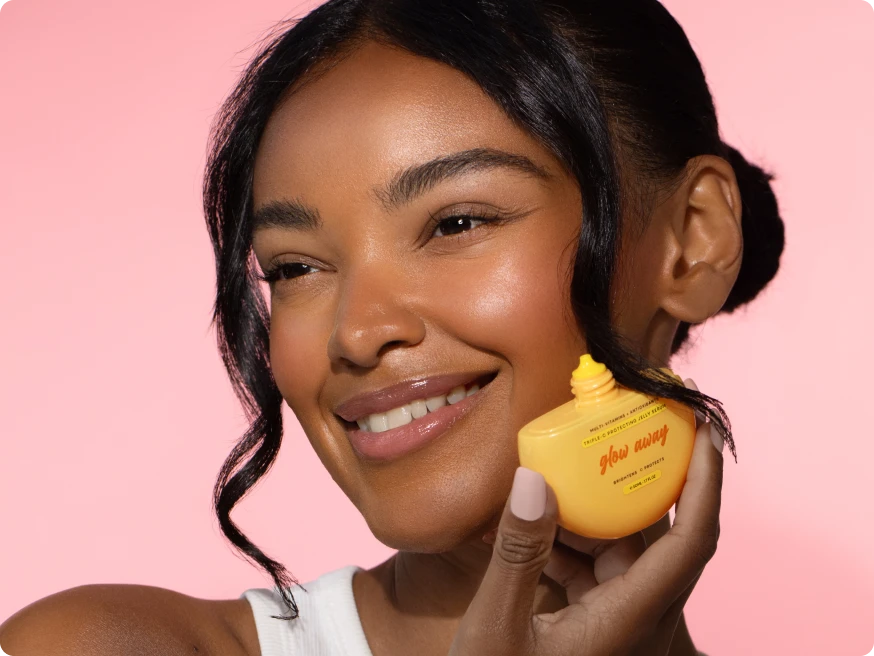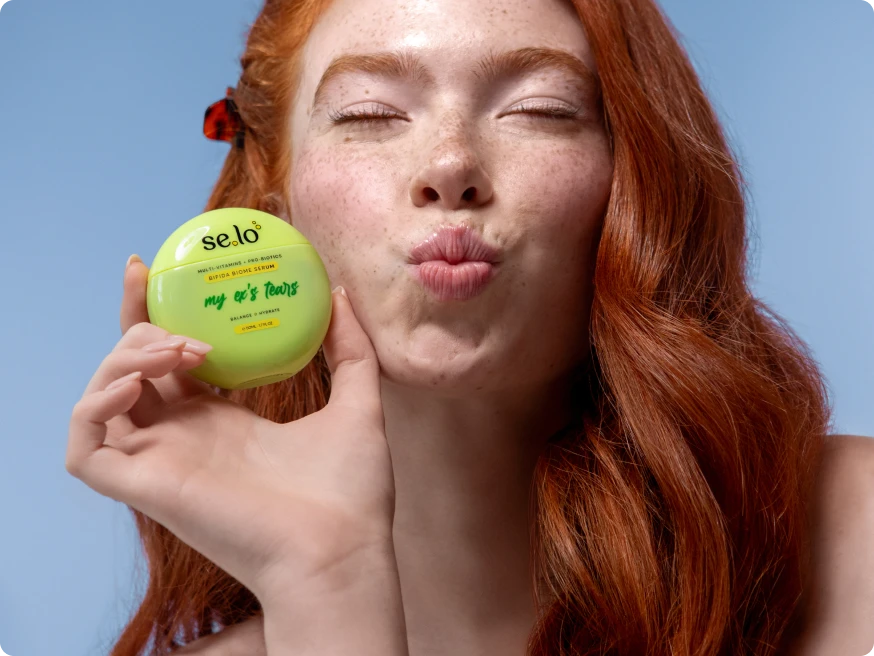All about sunscreens

You’ve probably heard that sunscreen is an essential part of any effective skincare routine and prevents many of the signs of skin aging. However, you may not know why this is, how sunscreen works, or the most effective way to use it.
There are also a few things to bear in mind when shopping for a new sunscreen if you’re looking for the most effective protection.
What Is Sunscreen?
Sunscreens are skincare products that contain active ingredients to help protect your skin from the damaging effects of UltraViolet (UV) radiation. Your skin has different substances that absorb light (chromophores) such as DNA, melanin (pigment), hemoglobin (the stuff that makes your blood red), and water. The melanin in your skin acts as natural sun protection and absorbs UV radiation before it can be absorbed by your DNA and cause cellular damage.
The more melanin in your skin, the more naturally protected your skin is. However, even the most darkly pigmented skin only offers the equivalent protection of an SPF 2-7 sunscreen. That’s why everyone needs to wear sunscreen, regardless of the natural color of their skin. Sunscreen mimics your skin's natural protective mechanism by absorbing UV radiation before it can be absorbed by the melanin in your skin or by your DNA.
In the US, sunscreens are classed as drugs and are tightly regulated by the FDA. Unfortunately, this means that the approval process for new sunscreen filters is much slower and results in fewer sunscreen filters being approved for use in the US compared to Europe, Australia, Japan, and Korea.
Chemical vs Physical Sunscreens
Sunscreens can be classed as either chemical, physical, or a mix of both. Chemical sunscreens are absorbed into your skin where they mimic your skin’s natural chromophores and absorb UV radiation before it can damage your DNA. Physical sunscreens work in a very similar way but they also reflect some longer UVA rays away from your skin.
Examples of chemical sunscreen filters include:
- Avobenzone
- Octinoxate
- Homosalate
- Tinosorb S
- Tinosorb M
Physical sunscreens contain zinc oxide and/or titanium dioxide.
Why You Need Sunscreen
The sun produces various types of radiation, known as solar radiation, which includes UV radiation, visible light, and infrared radiation. Each of these has a different wavelength which influences how damaging it is for your skin. Longer wavelengths can reach deeper into your skin but have less energy which means they cause less damage. UV radiation can be split into UVA and UVB the latter of which has a shorter wavelength (280-315nm) and causes the most damage. UVB rays can only penetrate the outer layer of your skin (your epidermis) where it causes direct DNA damage, sunburn, and skin cancer.
In contrast, UVA rays have a longer wavelength (315-400nm) and are capable of penetrating your dermis where they create free radicals that break down collagen and elastin and damage your skin cells. They’re the type of UV radiation that causes premature skin aging as well as tanning and pigmentation (e.g. freckles). As free radicals can contribute to skin cancer, UVA rays still carry a risk of skin cancer but to a lesser extent than UVB rays.
Why Do You Need Sunscreen?
Skin Cancer
When UV radiation is absorbed by DNA, it causes damage that can lead to genetic mutations. Your skin cells are usually able to repair this damage as it happens but sometimes they fail and the genetic information in your cells can end up mutated. If these cells are then able to multiply in an uncontrolled way, they can eventually cause skin cancer.
Research has demonstrated that sunscreens protect against this cell damage and that daily sunscreen use can greatly reduce the risk of developing skin cancer.
Anti-Aging
Sun damage caused by UV radiation is thought to cause up to 90% of all facial skin aging. The main culprit is the UVA rays that are present at similar levels year-round and can pass through glass. When UVA rays penetrate your skin, they cause the production of free radicals that break down the collagen and elastin in the deeper layer of your skin (your dermis) and speed up the development of fine lines and wrinkles.
Multiple research studies have found that sunscreens can prevent sun-induced premature aging (photoaging). Some studies have also suggested that daily sunscreen use can actually reverse existing photoaging by improving skin texture, clarity, and pigmentation.
Pigmentation
The melanin in your skin acts as a natural protection against sun damage. When your skin is exposed to the sun, the UV rays are absorbed by your DNA and cause damage to your skin cells. In order to protect your DNA from future damage, your melanin-producing cells (melanocytes) make more melanin which is transferred to your skin cells and creates a protective layer above the nucleus where your cells' DNA is stored. This is why your skin gets darker when it’s exposed to the sun (i.e. a sun tan). Sometimes your melanocytes distribute melanin unevenly which causes freckling, dark marks, and an uneven skin tone.
Sunscreen absorbs the UV rays before they can be absorbed by your melanin or DNA cells and this protective melanin production process is not triggered. Research has found that daily sunscreen use can prevent and improve hyperpigmentation.
Rosacea
Rosacea is an inflammatory skin condition characterized by persistent facial redness, flushing, and visible blood vessels. It’s a hard skin condition to manage and there are many factors that can trigger flares, including; hot and cold climates, spicy food, alcohol, and UV radiation.
For this reason, sunscreen is an essential product for anyone prone to rosacea. One study found that daily sunscreen use over 21 days was able to reduce the redness, dryness, and scaling associated with rosacea.
Acne
Many people with acne avoid sunscreen as they are worried that it might make their acne worse. However, research suggests that UV radiation can overstimulate your oil glands and encourage your skin to produce more oil. An overproduction of oil is one of the key causes of acne which means that the sun may worsen acne.
Sunscreen also helps to prevent the worsening of acne scarring, especially post-inflammatory hyperpigmentation, and post-inflammatory erythema.
How Does Sunscreen Work?
UV radiation (and all electromagnetic radiation) is made up of tiny particles called photons. Sunscreen molecules absorb these photons and convert their energy into heat which they can then disperse before absorbing the next photon of light.
Photostable vs Non-Photostable Sunscreen Filters
If a sunscreen molecule is unable to disperse the absorbed photon energy to heat fast enough, it’s unable to absorb any further photons of UV light and can’t protect your skin. These sunscreen filters are referred to as non-photostable and need to be applied very frequently to keep your skin protected.
An example of a non-photostable sunscreen filter is avobenzone. However, there’s no need to worry if you see this in your sunscreen as avobenzone can be easily stabilized by other sunscreen filters like octocrylene. Physical sunscreen filters are very photostable as are some of the newer chemical sunscreen filters (some of which are yet to be approved by the FDA for use in the US).
What To Look For In A Sunscreen
Not all sunscreens are created equally, so it’s important to understand what to look for if you’re after an effective sunscreen.
SPF30+
It’s recommended to use a sunscreen that contains at least SPF30 or more in order to provide your skin with adequate protection.
The SPF (Sun Protection Factor) of a sunscreen is a measure of how much UVB protection it offers. It’s determined by measuring the minimal amount of UV exposure required to cause sunburn (minimal erythema dose; MED) with and without sunscreen. You can then calculate the SPF by dividing the values:
SPF = MED for protected skin / MED for unprotected skin.
The SPF gives a rough estimate of how much longer you can remain in direct sunlight without burning compared to if you had no sunscreen. However, it’s only a rough estimate as the levels of UVB radiation vary throughout the day.
The higher the SPF, the more protection for your skin.
The recommendation to use a sunscreen with a minimum SPF30 is based on the fact that the increase in added protection from SPF30 to SPF50 is minimal. SPF30 blocks around 96% of UVB radiation while SPF50 blocks around 98%. However, when you look at how much UVB radiation still gets into your skin (4% vs 2%) you receive double as much UVB radiation with SPF30 sunscreens as you do with SPF50 sunscreens.
Broad Spectrum/ Adequate UVA Protection
A sunscreen should be broad spectrum, which means that it offers protection against both UVA and UVB radiation. The majority of sunscreens have to conform to this standard in order to meet regulations but the level of UVA protection in sunscreens varies a lot. A sunscreen that’s labeled as broad-spectrum must contain both UVA and UVB protection but there's no regulation to say how much UVA protection needs to be offered. However, there are other methods for measuring UVA protection including the UVA seal, PPD, and UVA-PF.
The UVA seal is a requirement for any sunscreens sold in Europe and, in order for sunscreens to meet this requirement, they must offer a UVA protection that is at least one-third of the UVB protection/SPF. For example, a sunscreen with an SPF of 30 must offer a UVA-PF (the UVA equivalent of SPF) of at least 10. The UVA-PF of a sunscreen can also be measured by persistent pigment darkening (PPD) which is a similar process to how SPF is measured but uses pigmentation as an end-point rather than sunburn/redness. The PPD rating is indicated by a ‘+’ sign, for example:
PPD+ = 2-4
PPD++ = 4-8
PPD+++ = 8-16
PPD++++ = 16+
Added Beneficial Ingredients
There are other ingredients that can be added into sunscreens to increase overall skin protection. The most effective of which are antioxidants.
Antioxidants are stable molecules that neutralize free radicals before they can damage your skin cells, and DNA, and break down the collagen and elastin in your skin. Research suggests that sunscreens can only prevent around 55% of the free radical production caused by sun exposure. However, when antioxidants are added to sunscreens, they can prevent up to 78% of free radical production. Some research suggests that visible and infrared light can also contribute to free radical production, neither of which is blocked by traditional sunscreens. However, antioxidants can help reduce any free radical damage. Visible light, particularly high energy visible (HEV) light, or blue light, has also been identified as a trigger for pigmentation conditions like melasma. Although they’re not classed as a sunscreen filter, iron oxides can help extend the protection of sunscreens into the longer UVA and visible light spectrums.
Research suggests that sunscreens, particularly zinc oxide-based sunscreens, with added iron oxides are more effective at preventing and reducing melasma than traditional sunscreens.
How To Use Sunscreens In Your Skincare Routine
Both the SPF and UVA-PF of sunscreen are hugely dependent on the amount of sunscreen that you apply. The measurements are worked out based on applying 2 milligrams (mg) per centimeter squared (cm²), which is roughly:
- ¼ teaspoon for your face
- ½ teaspoon for your face and neck
- A shot glass (1oz) for your body
If you don’t apply the correct amount of sunscreen then you’re not getting the full protection offered by your sunscreen. Not only do you need to apply the correct amount of sunscreen, but you’ll also need to re-apply it frequently enough. It’s advised to reapply sunscreen every 2 hours of direct sun exposure.
Your sunscreen should be the last step in your AM skincare routine, after your cleanser, any toners/serums, and your moisturizer. The only thing you should be applying on top of your sunscreen is your make-up (if that’s something you use).
Conclusion
Sunscreen is an essential part of any skincare routine, no matter your skin type or color. The sun damage caused by UV radiation is responsible for up to 90% of all facial skin aging, causes pigmentation, and increases your risk of skin cancer. In order to keep your skin adequately protected, you should look for a broad-spectrum sunscreen with an SPF of 30 or more, apply the correct amount (2mg/cm²), and reapply every 2 hours of direct sun exposure.
0 comments





